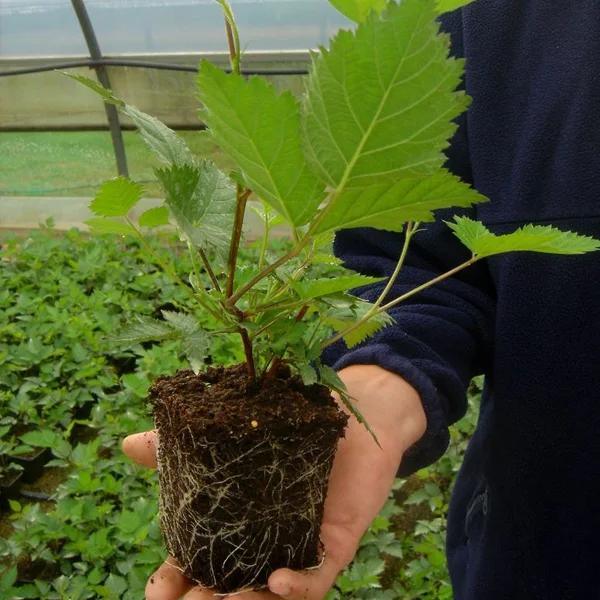Blackberry bushes are easy to cut back, this page is not here to overcomplicate things.
It’s just a matter of choosing what works for your garden: a bushy, natural style, a quite tidy trellis, or a very tidy trellis!
Table of Contents
How Blackberry Canes Grow
The base of a blackberry is a woody crown just above ground level that produces long stems called canes.
Most blackberry varieties are floricane types: their canes grow for one year, then fruit in their second year.
Second year canes are usually cut out in Winter after fruiting.
On new, establishing plants, some growers leave canes on for a third year to encourage root development, and produce a smaller second crop while the plant’s vigour is still building up.
Do I Really Have to Train Blackberry Bushes?
Training blackberries is not essential, plenty of gardeners let their bushes sprawl freely, perhaps casually tying the canes to the top of a fence, or maybe draped over established fruit trees in a mixed orchard.
Supporting & Trimming Canes Gives the Best Crops
To get the best crop from the least space, either :
- Use a support system for long canes, separating the year-old fruiting stems from the current year’s new growth.
- Or, use a summer pruning system and cut first year canes at a manageable size that bush out at the top.
The supports could be tidy wires on posts, or casually on a back fence like Papa Richards demonstrates here with a thorny beast:
Traditional weaving long canes along wires
There are a few approaches to training blackberries on wires, here is a typical two-way split, using three low wires, and selecting six new canes per year to keep as next year’s fruiting wood:
Variations on cane management:
- You could train the new canes in different, alternating directions each year.
- Or grow the first year’s canes along the wires one way, then tie subsequent years’ canes upright til Autumn, then move them down onto the wires when the two-year-old fruited canes are pruned out.
Modern Alternative: TPUPS Method
TPUPS = Trellised Production Using Primocane Suppression
TPUPS is a super-tidy trellis method where you prune out new canes (primocanes) until early Summer, then allows only one or two new canes to develop each year.
This gives a “quality over quantity” crop on a well-controlled, disease-free, long-lived plant, using only two support wires.
- TPUPS is intended for vigorous, trailing varieties with long canes. These are well suited to filling out wires.
It is not recommended for semi-erect varieties with shorter canes. - The method was developed in warm American regions, and we’re unsure how well it works in colder Northern UK.
- As we currently understand, you let the bush grow normally three years after planting, then start primocane suppression.
Video 1 of 5 on the TPUPS Method
TPUPS is straightforward and Dr Powell is an experienced teacher, this 5 video series covers the growing year and is all a beginner needs:
Note well what Dr Powell says about selecting varieties: he trials lots of blackberries, and in Alabama his where his farm is, the cultivar ‘Kiowa’ excels.
Your garden will be different, you must do your own trials and compare results with neighbours to know for yourself.
But a safe bet anywhere in the UK should be the thorny, vigorous, Award of Garden Merit cultivar Bedford Giant, which grows like a wild bramble, but with bigger, sweeter fruit.
System 2: Pruning upright canes to be bushy
Instead of going for long canes, you can cut yours short in their first Summer, as soon as they hit 90-120cm tall.
This makes the cane stiffen and bush out with several laterals at the top, which all fruit the following year.
Waldo is an ideal semi-erect variety for growing this way.
We’ve skipped the first 2 mins of this video to get to the pruning part:
These top-heavy plants often need wire supports along the sides to stop the wind blowing them about.

